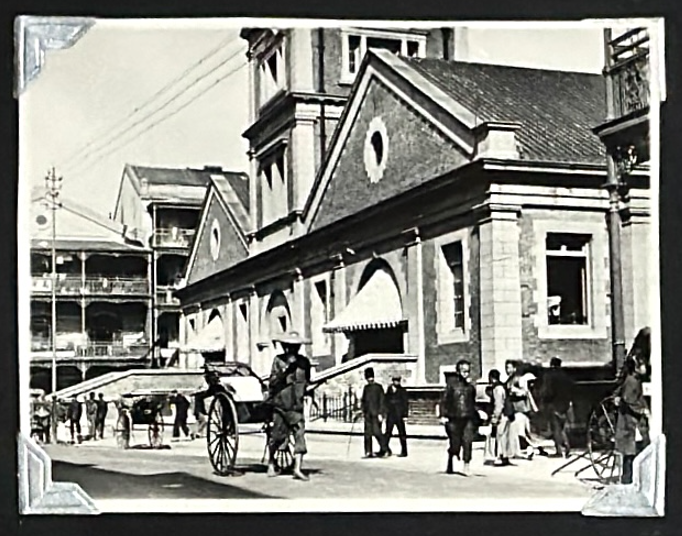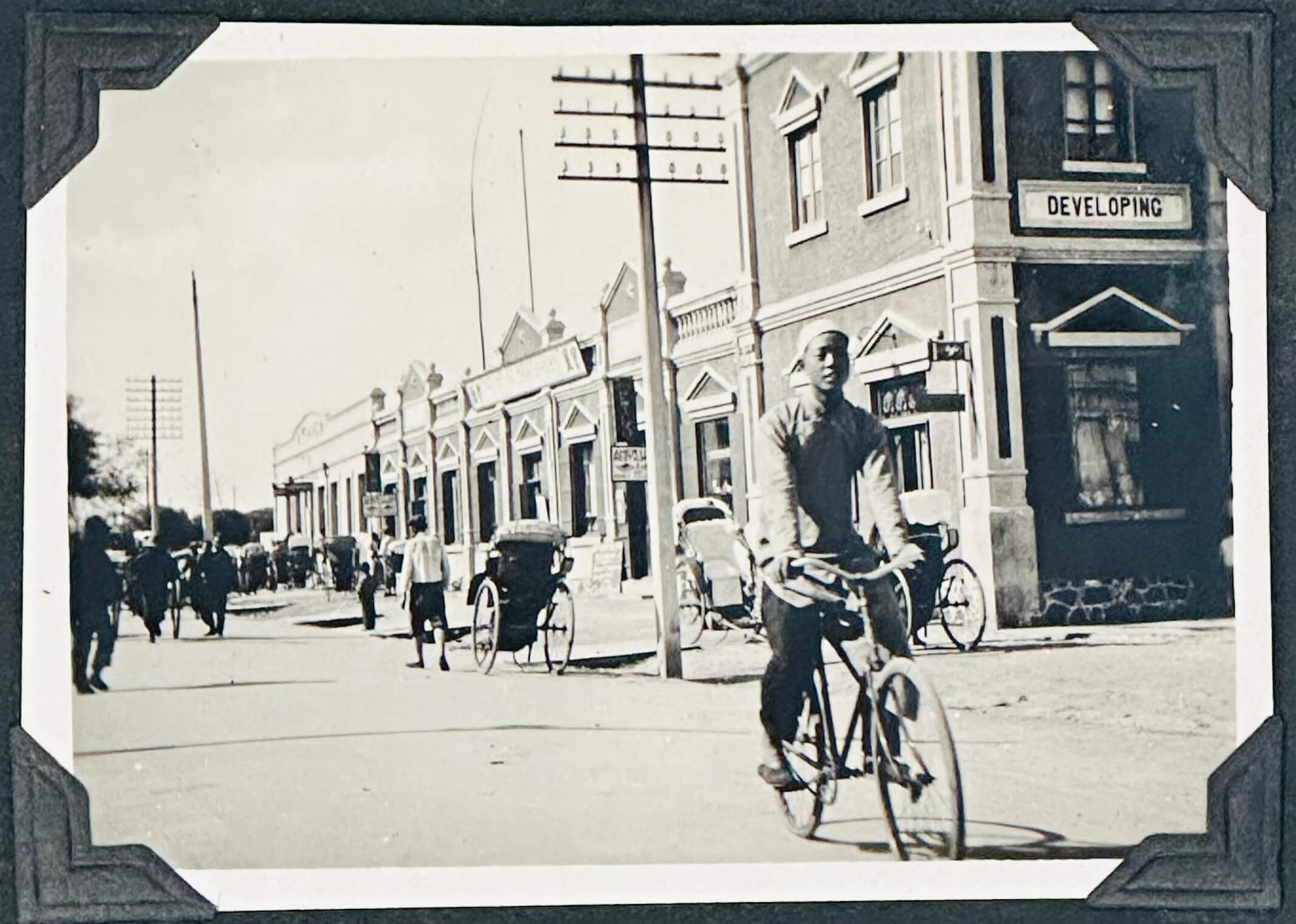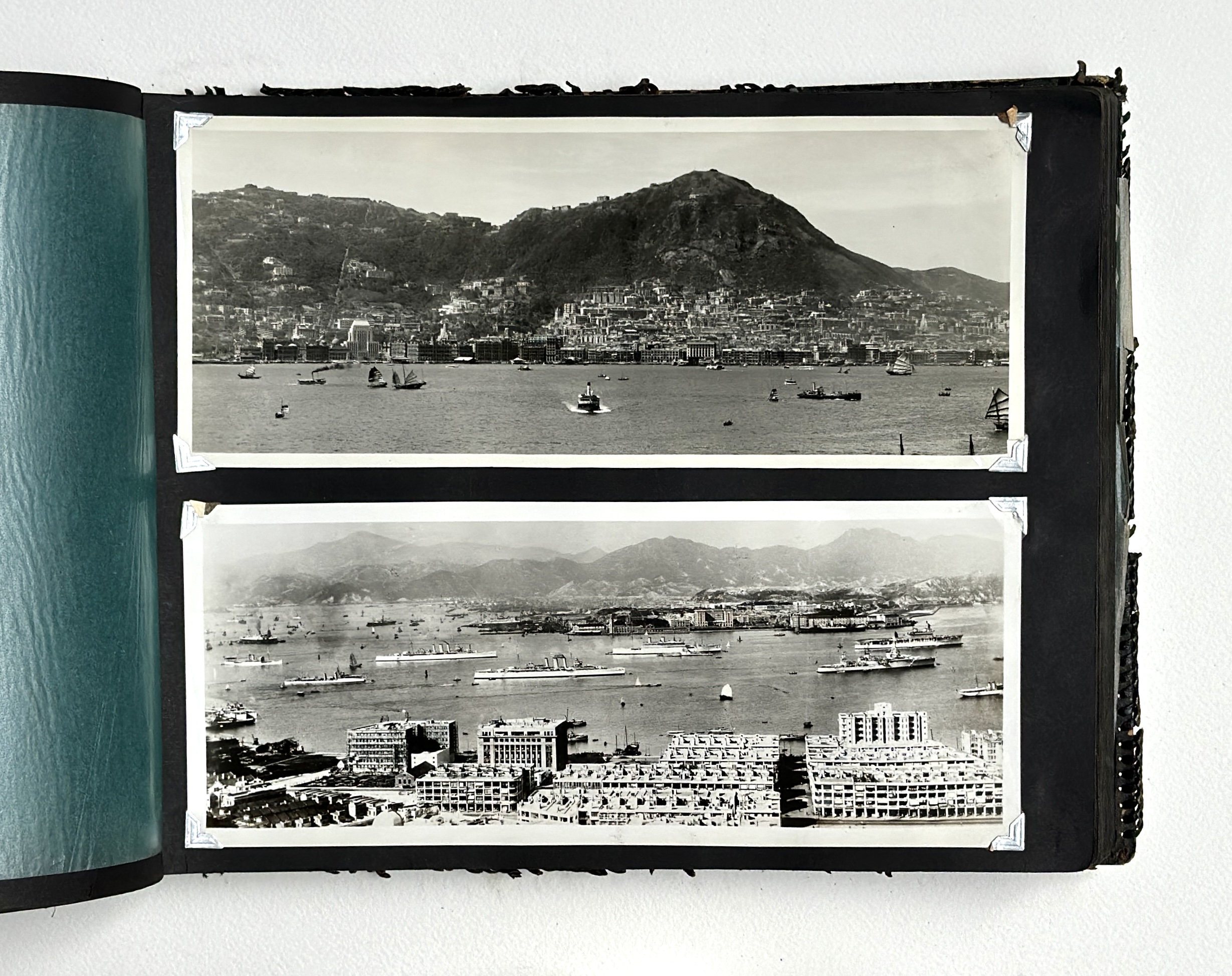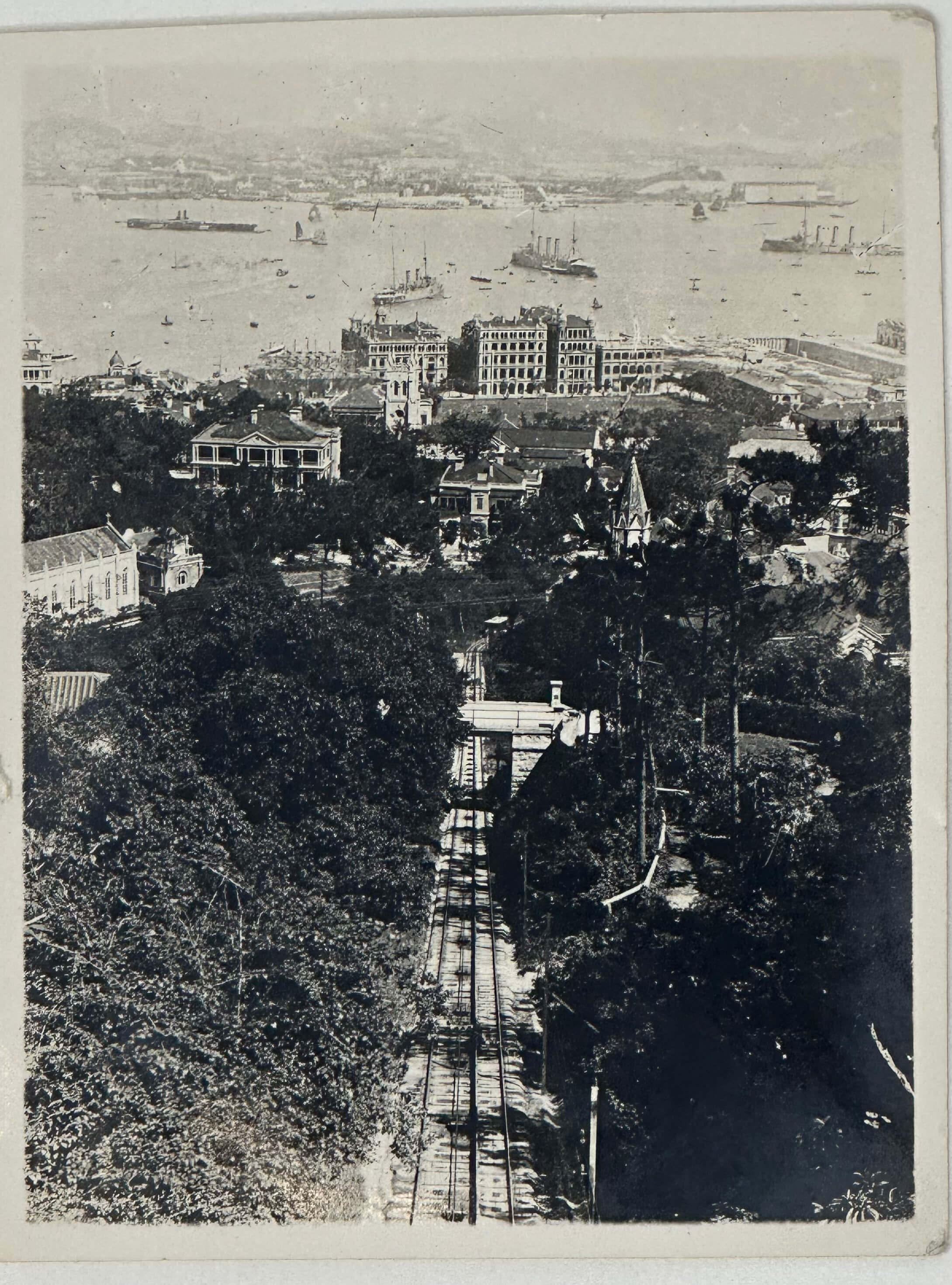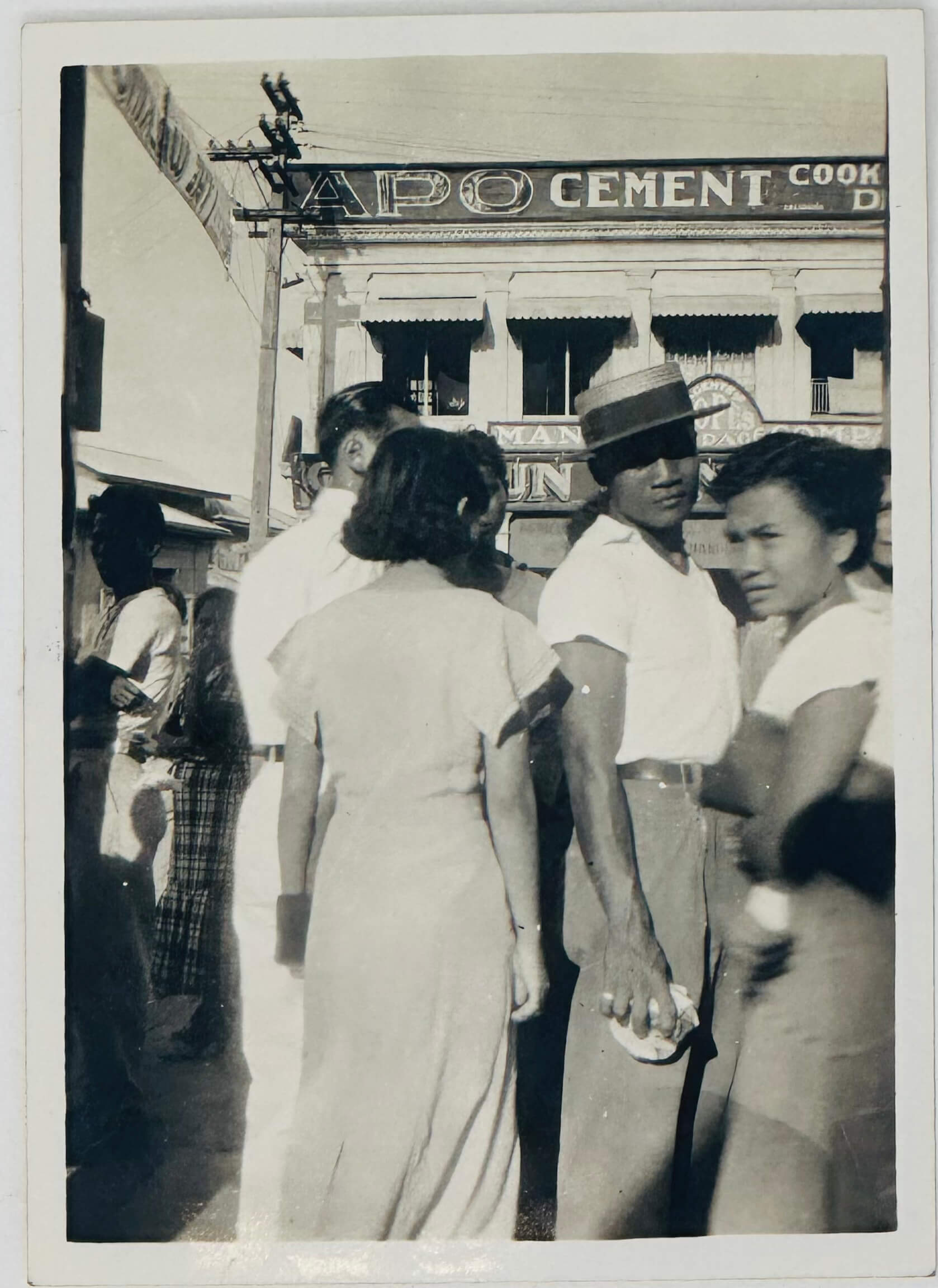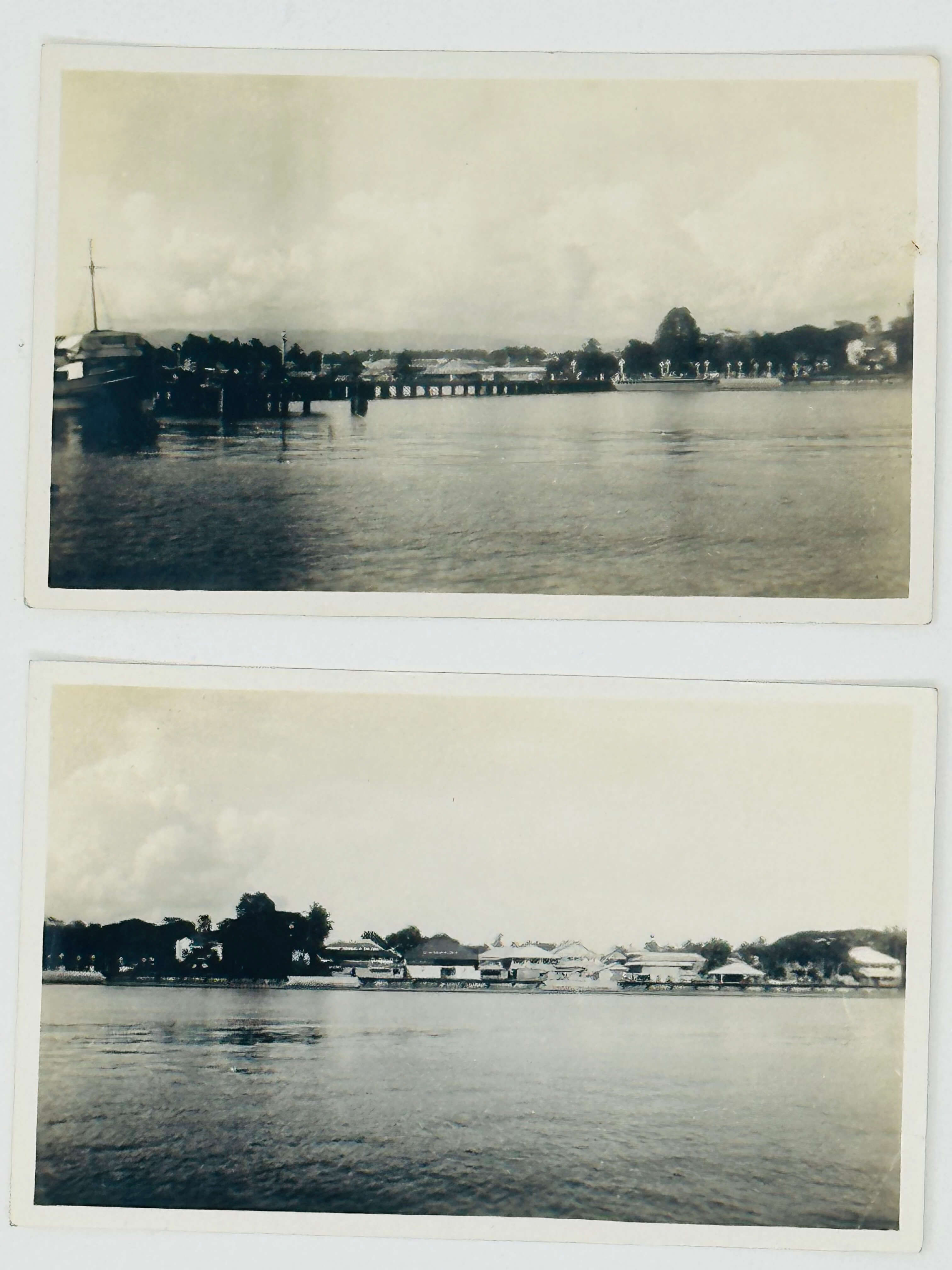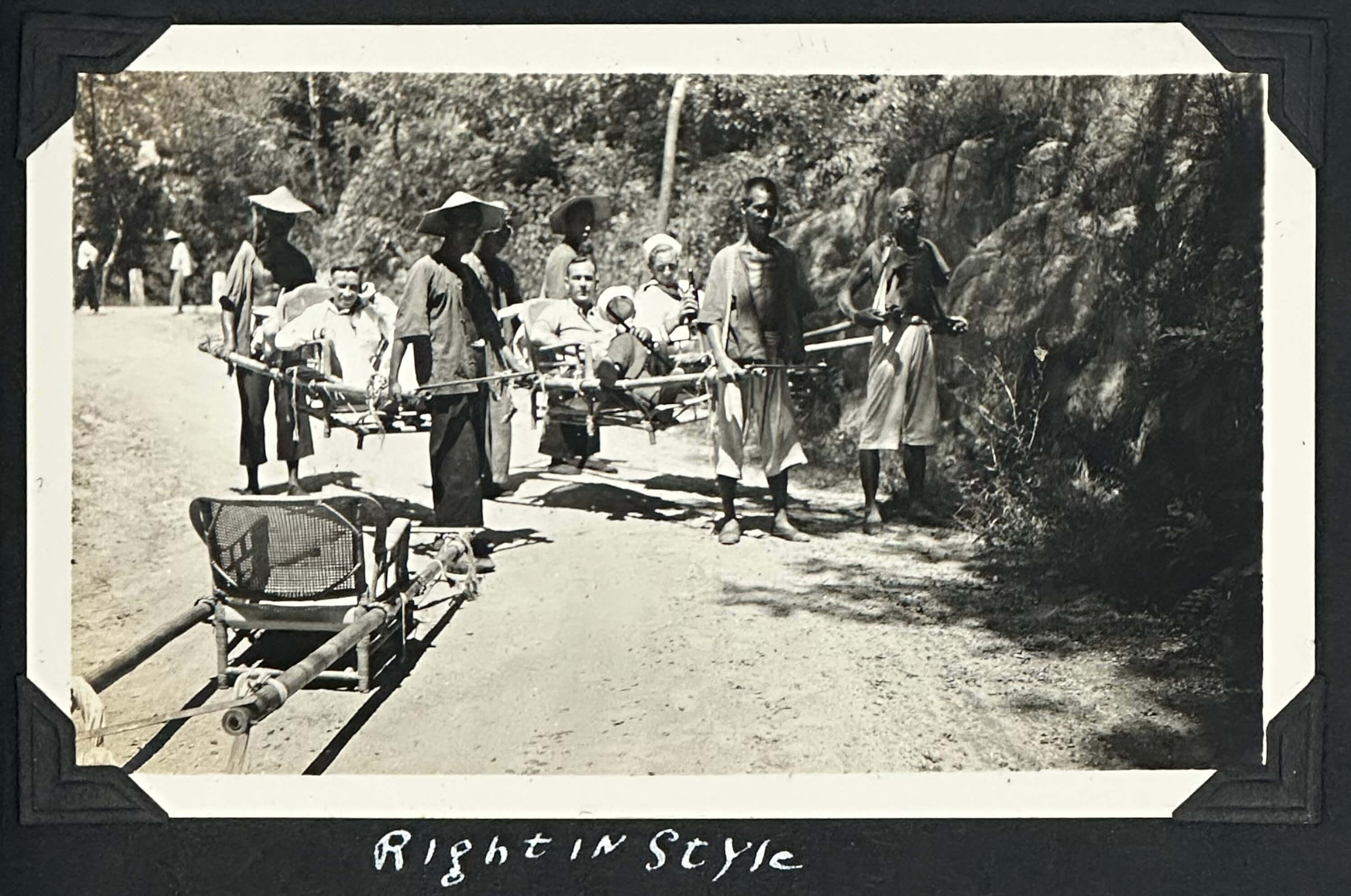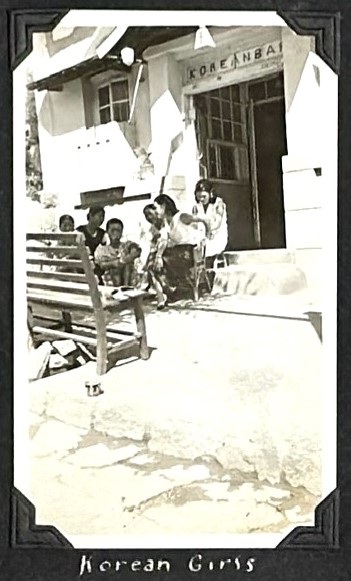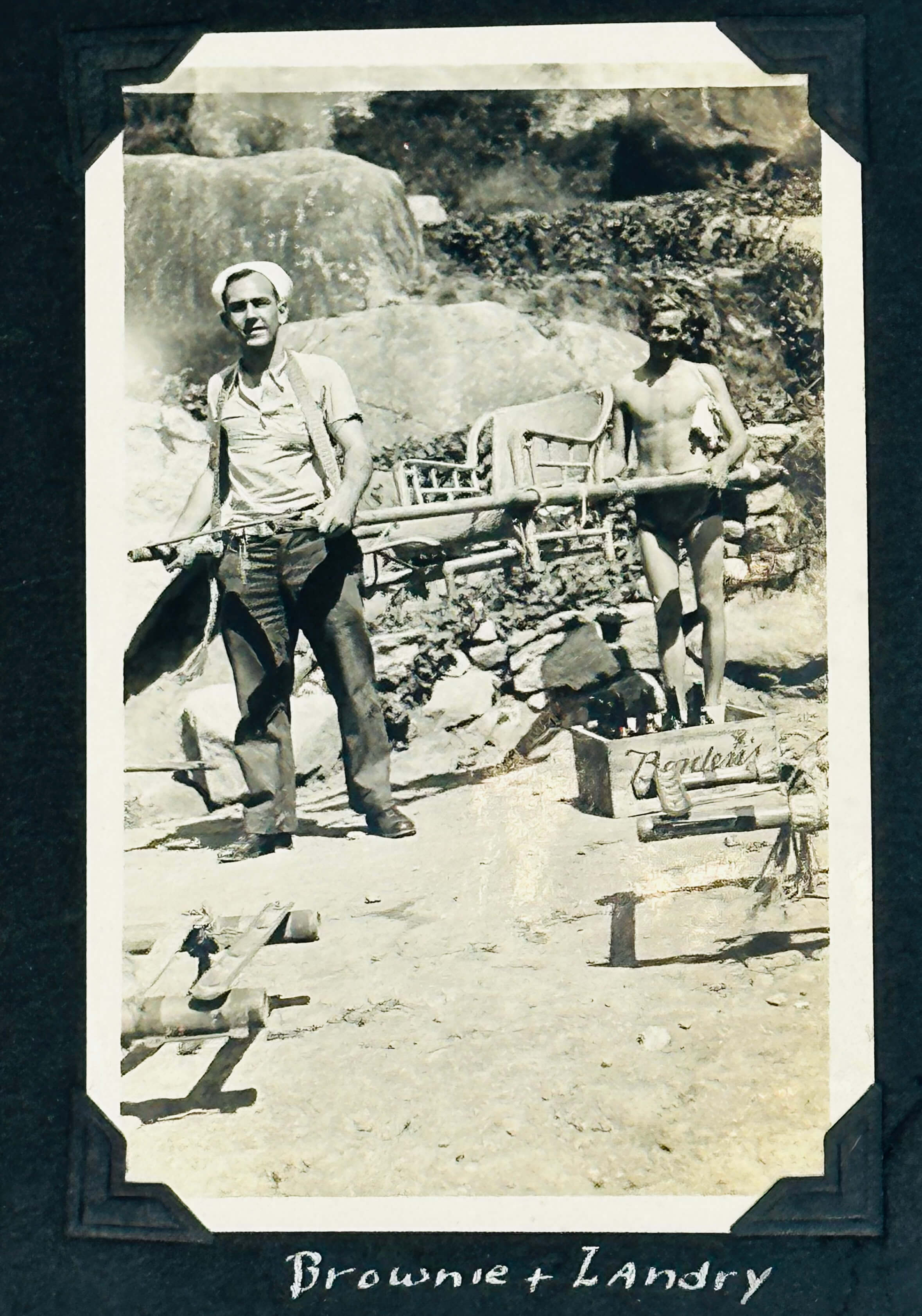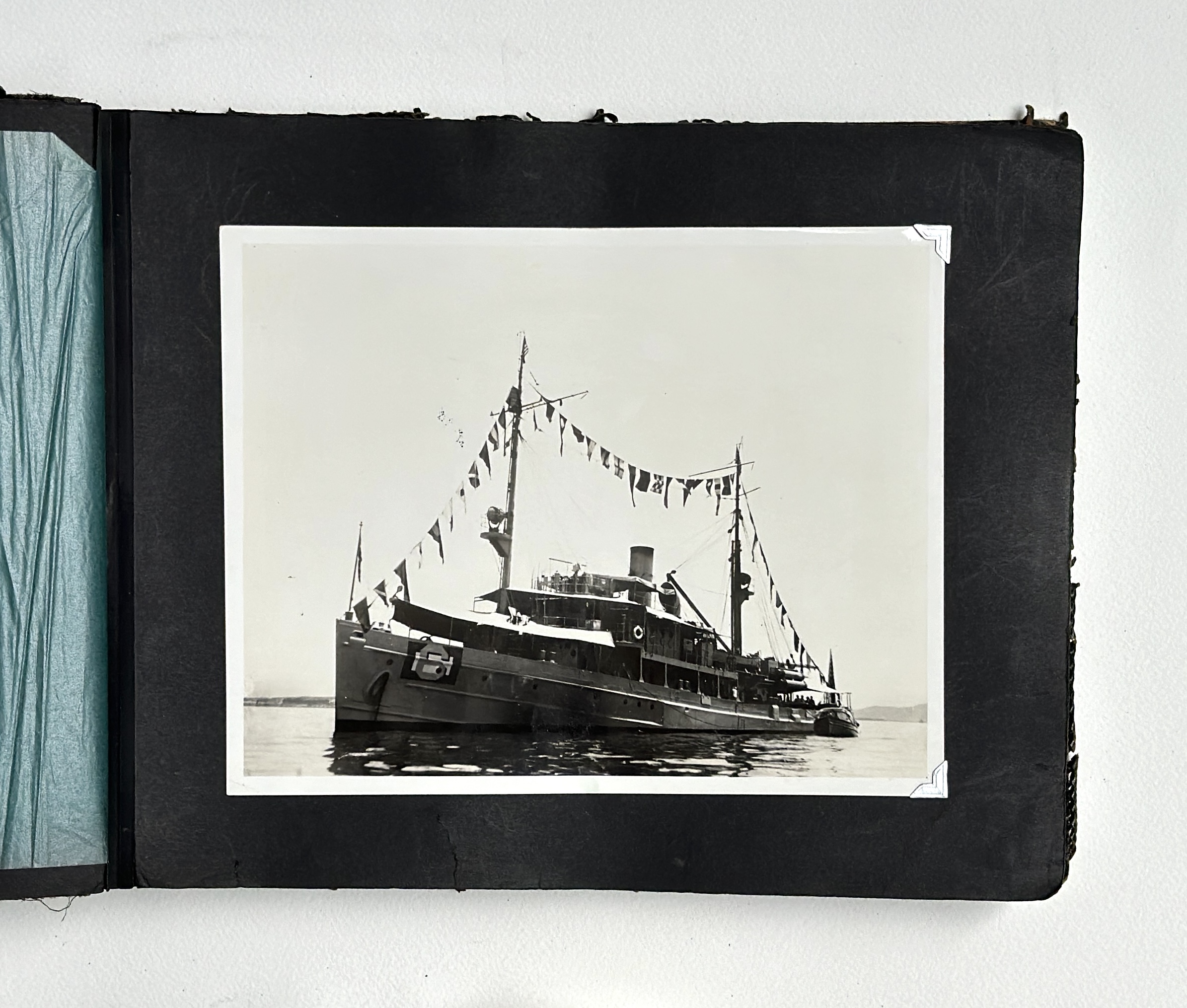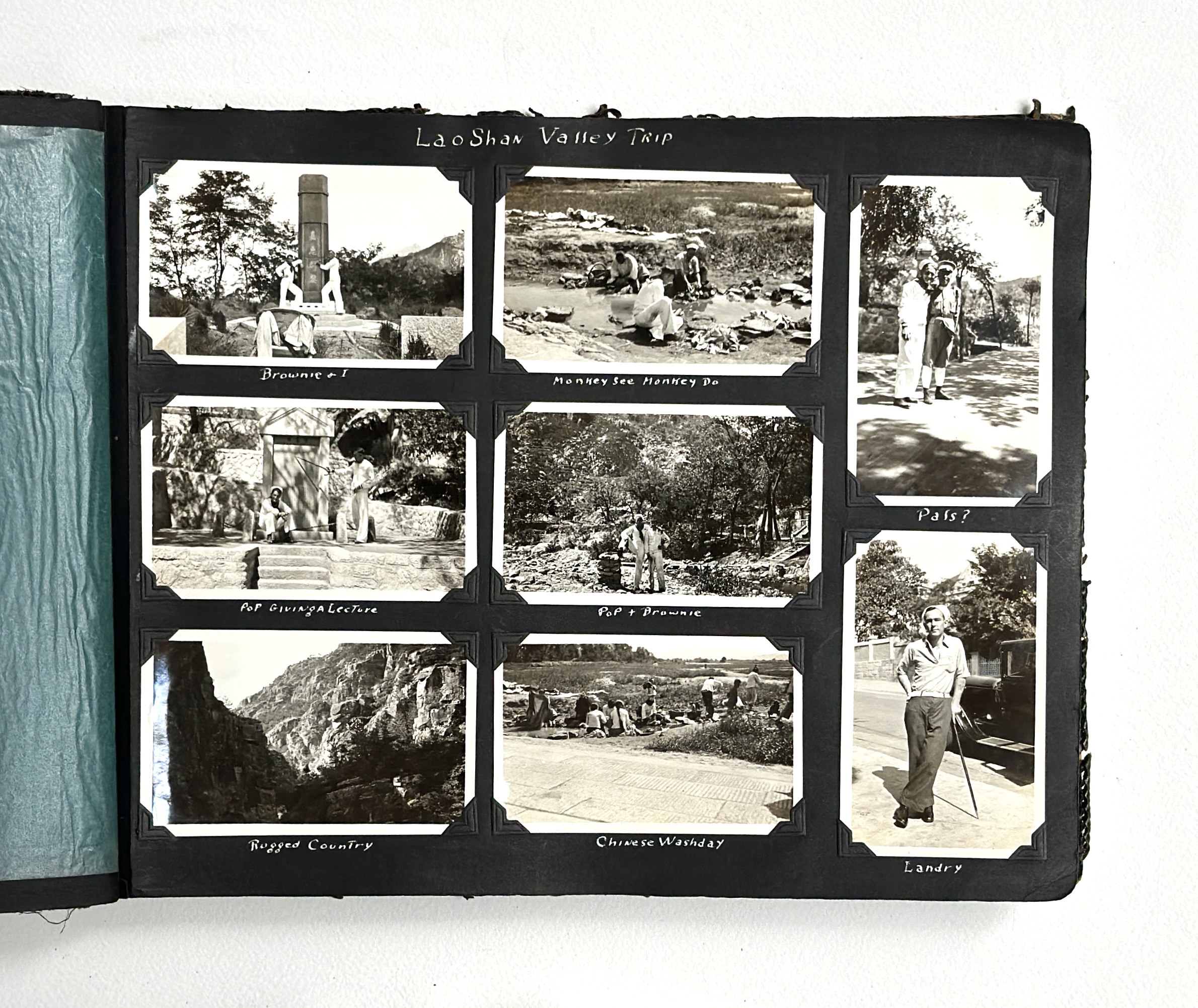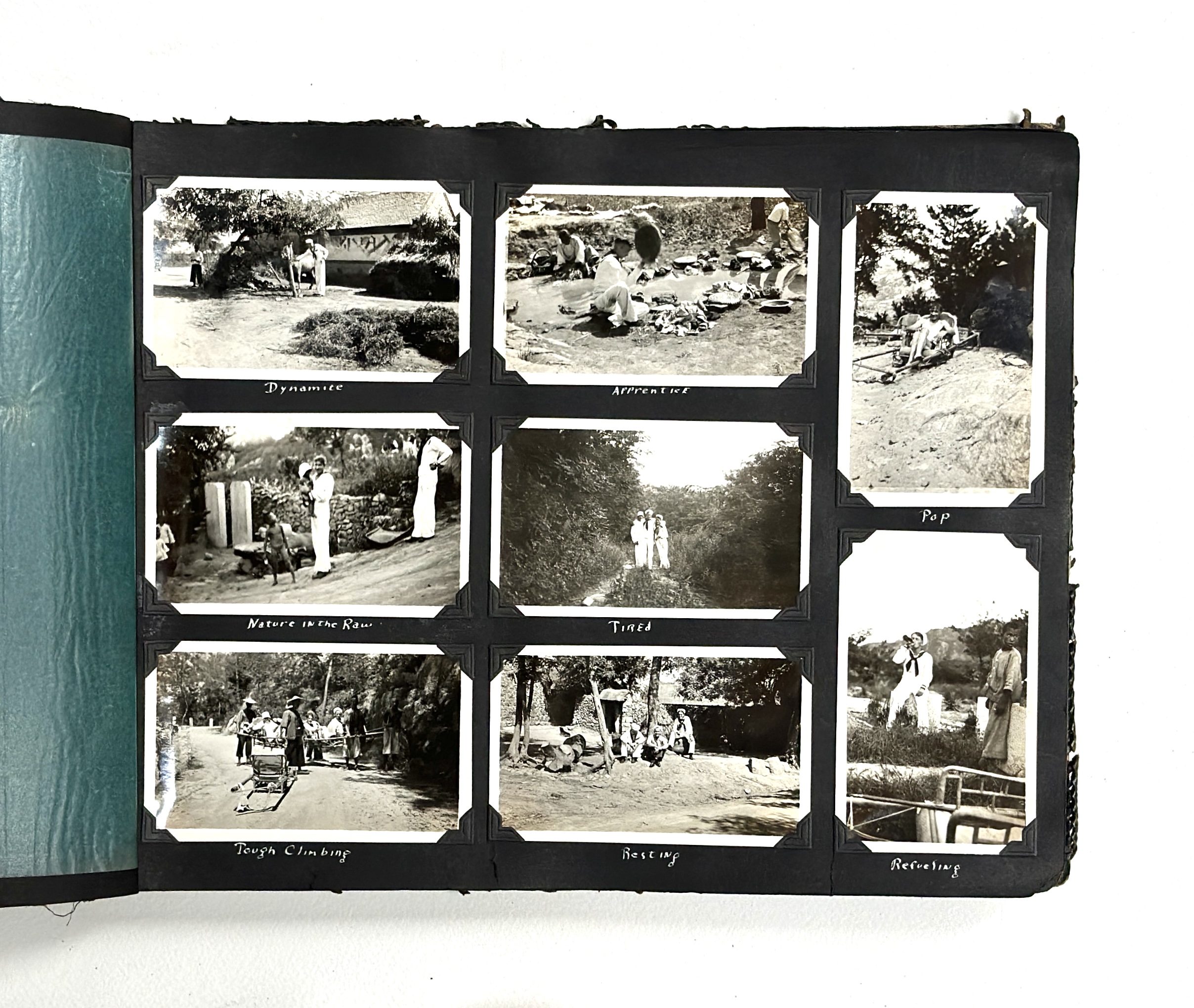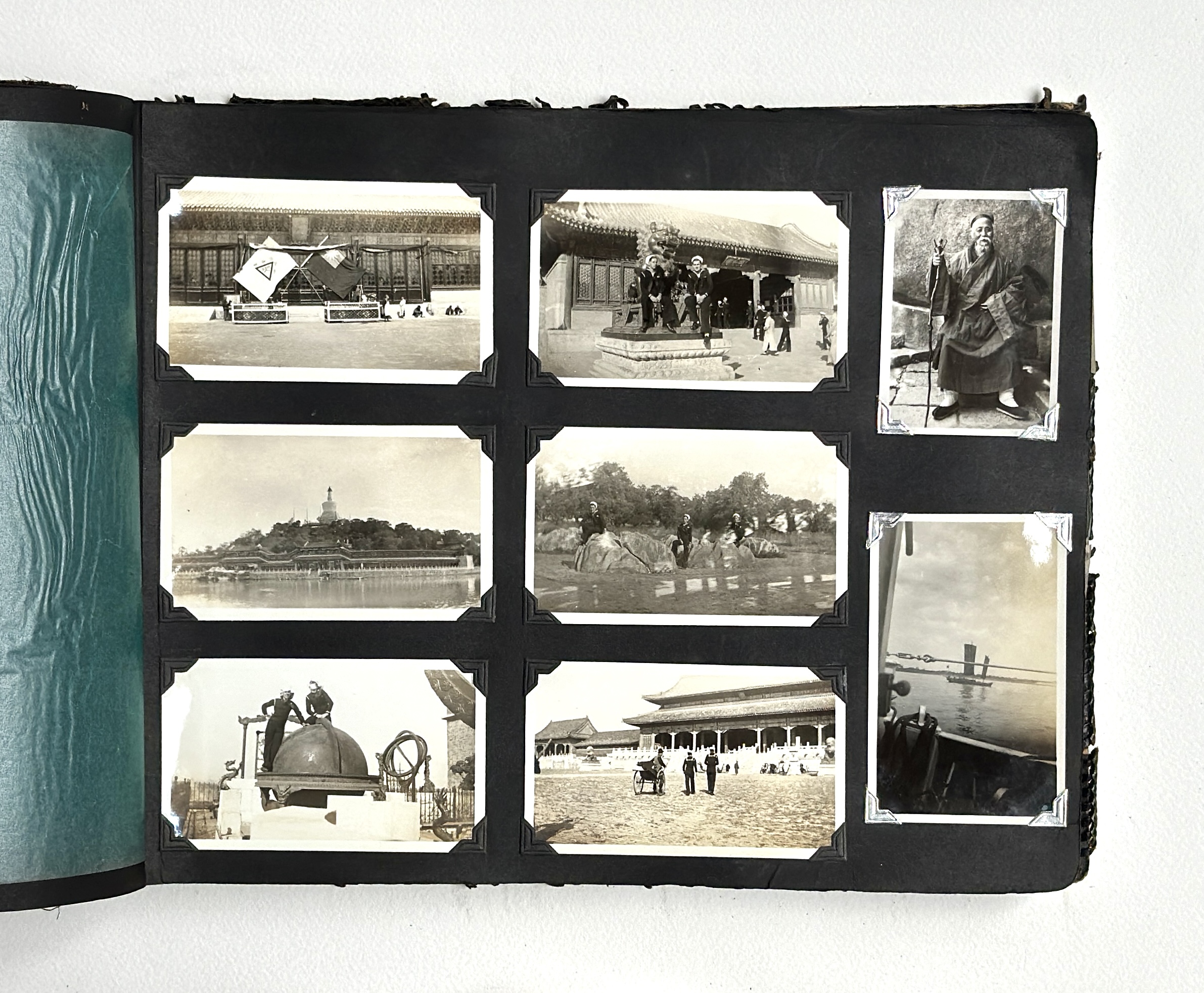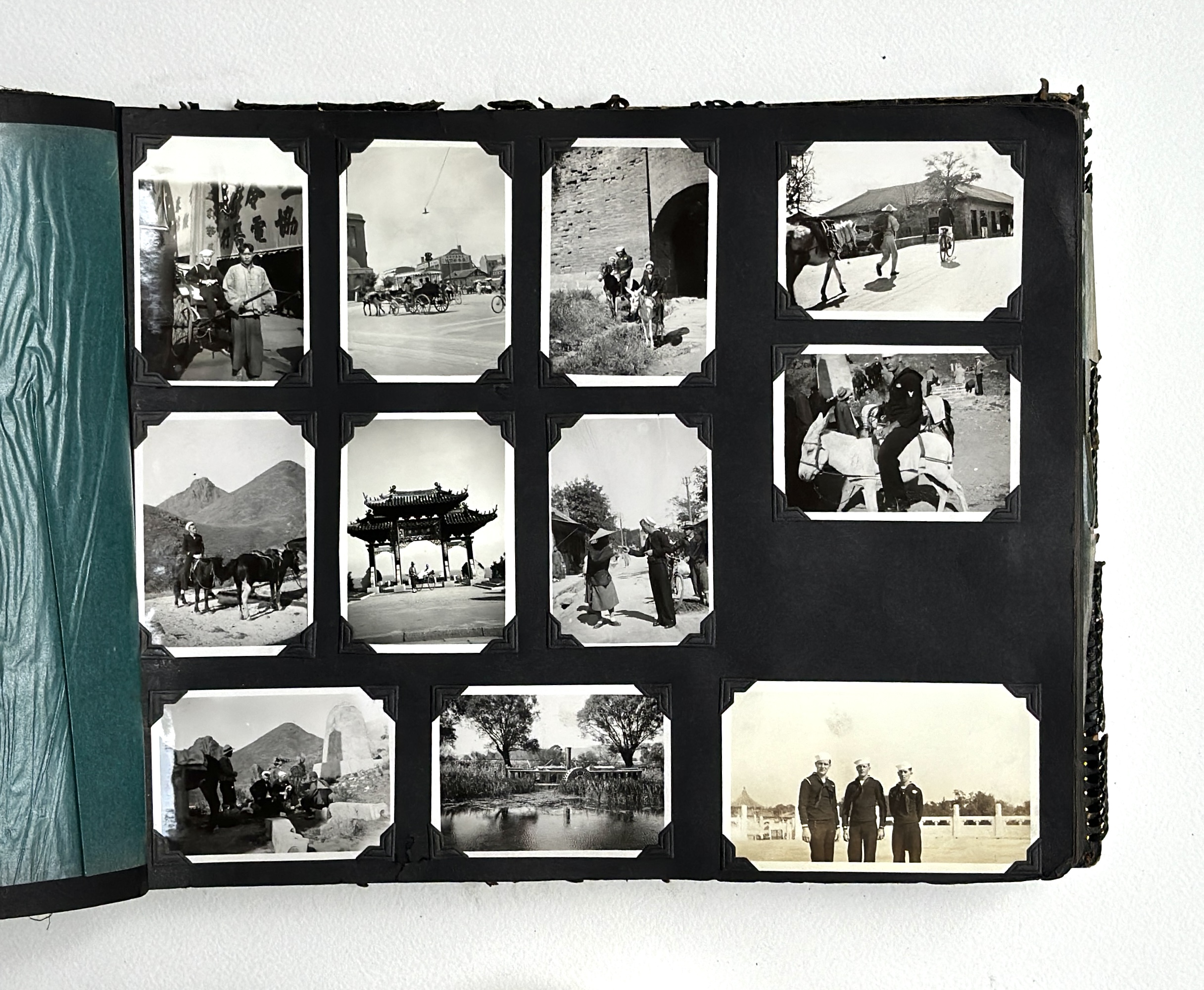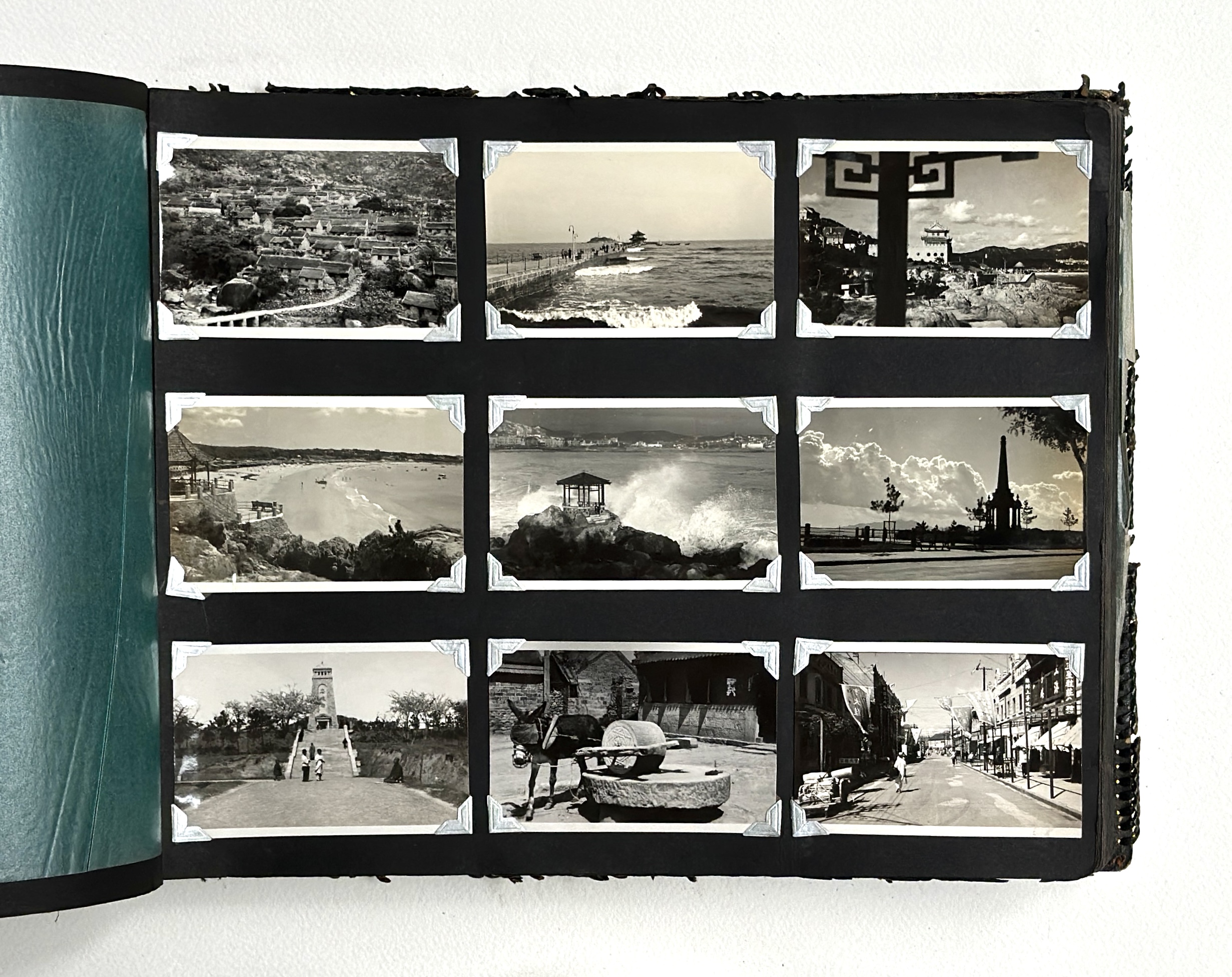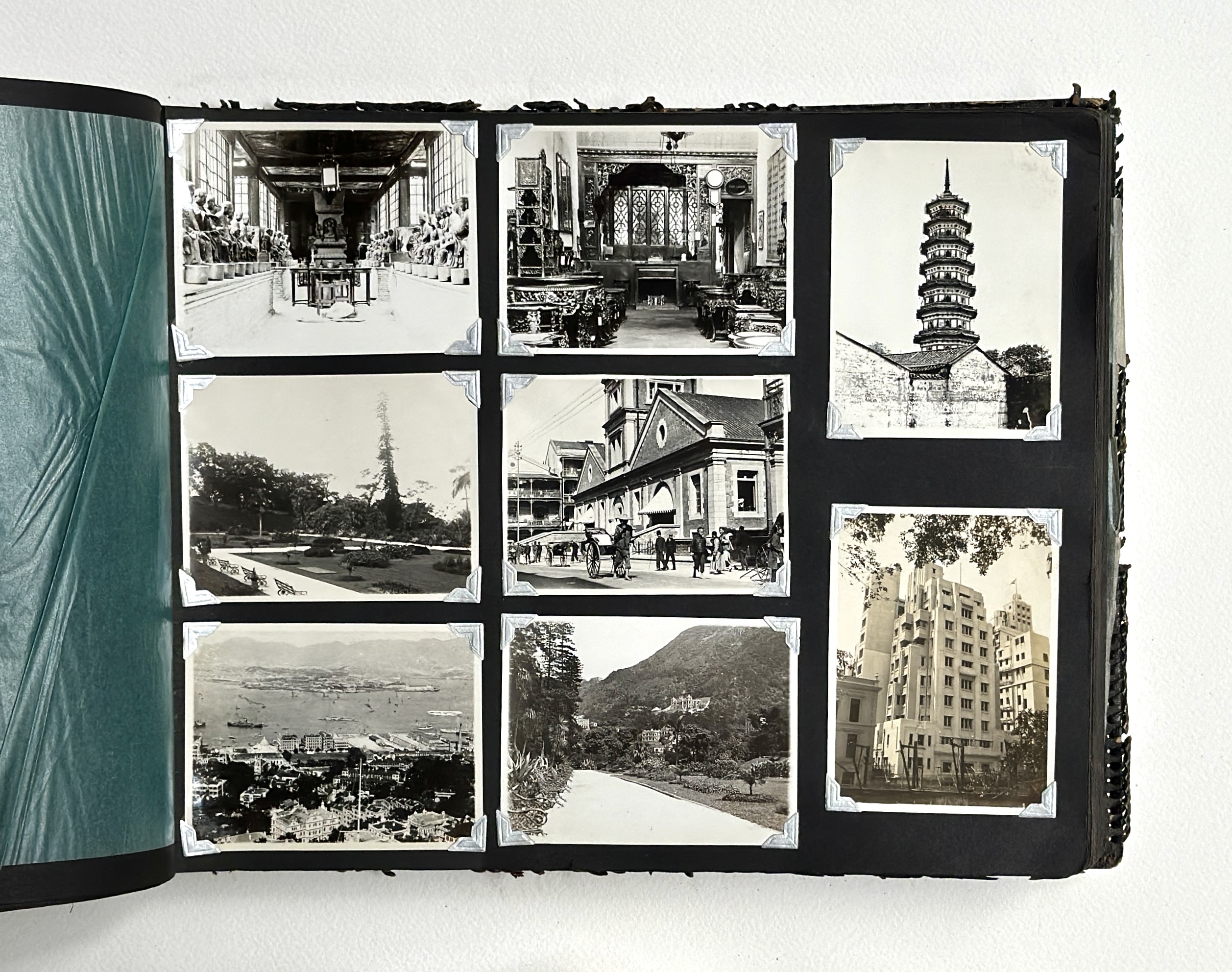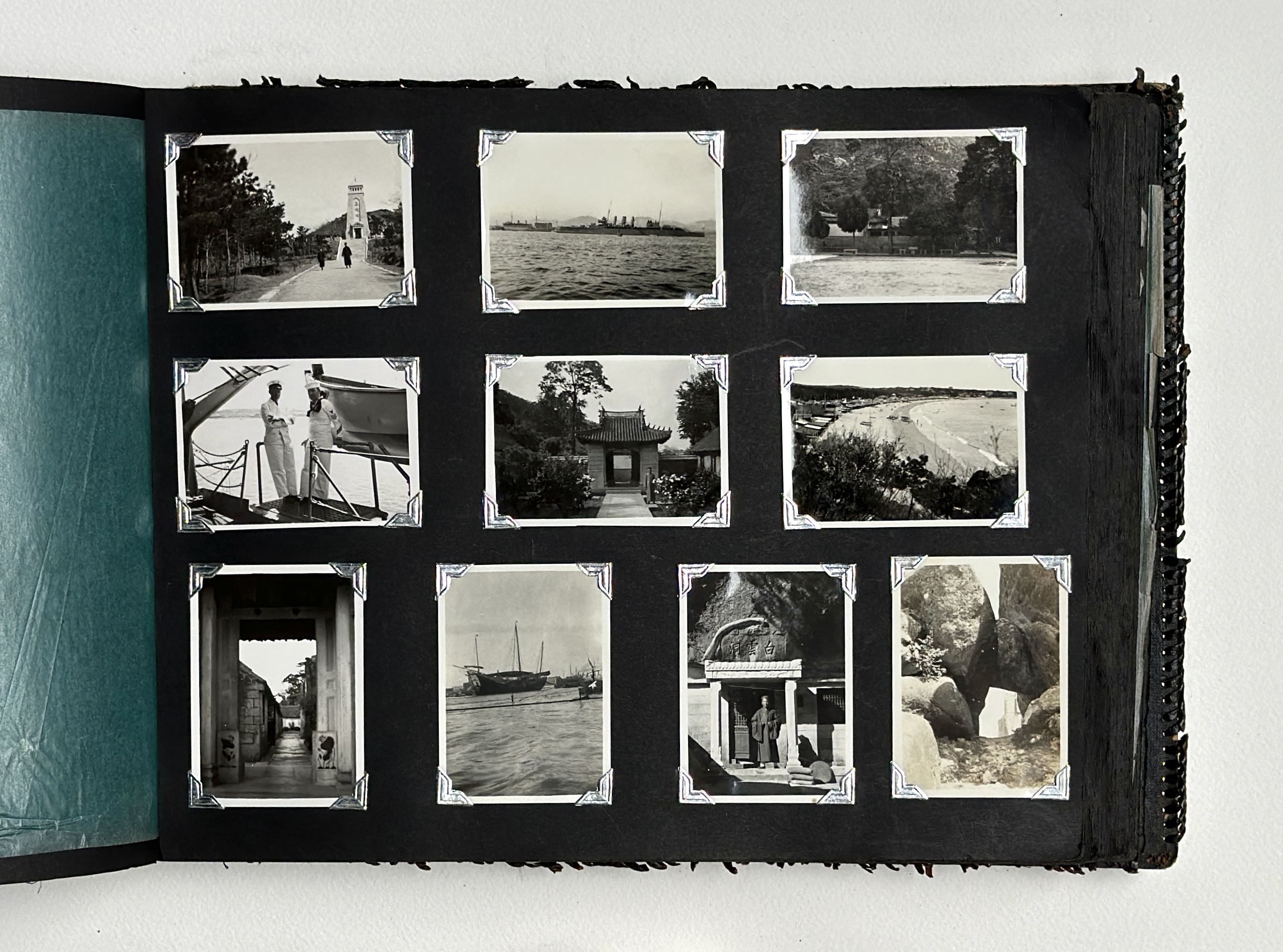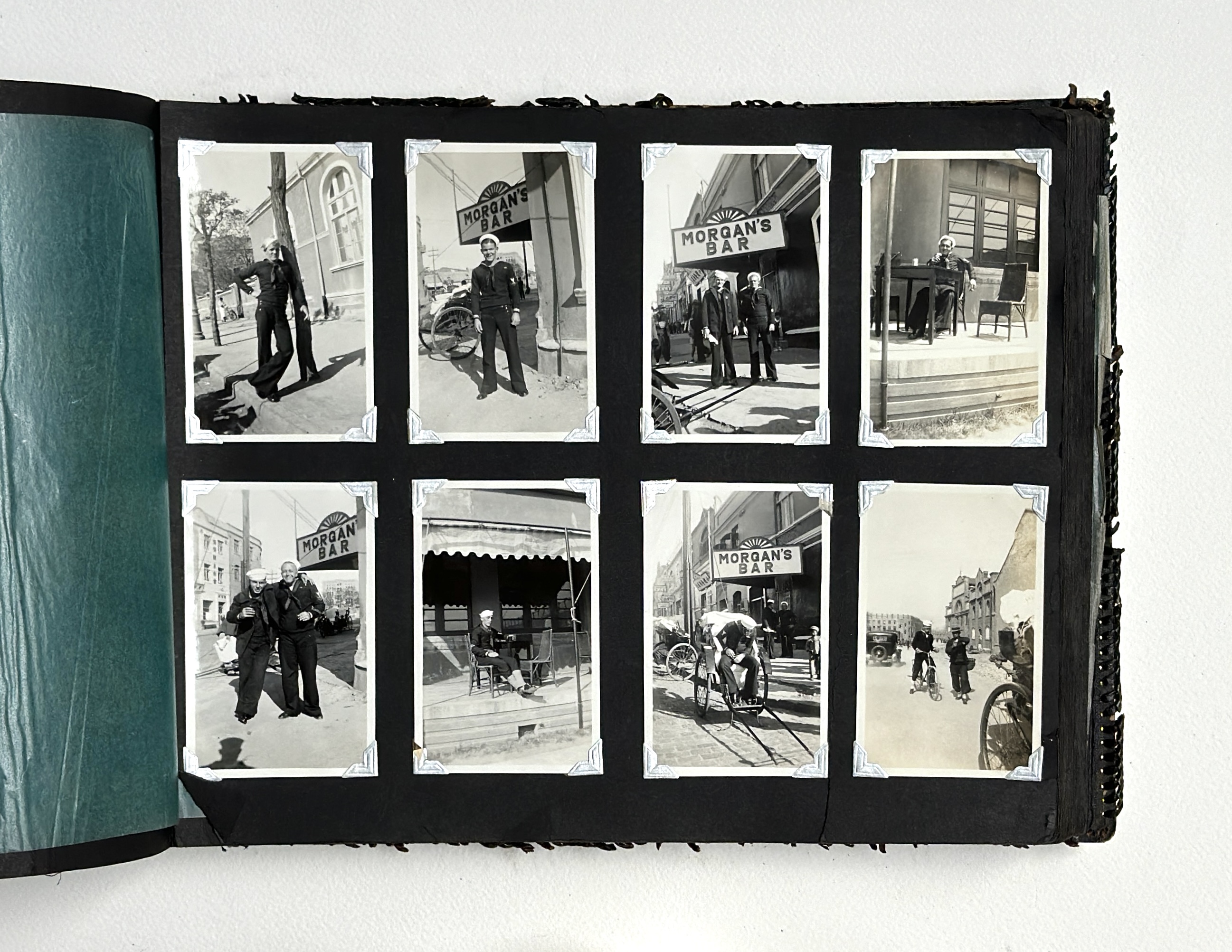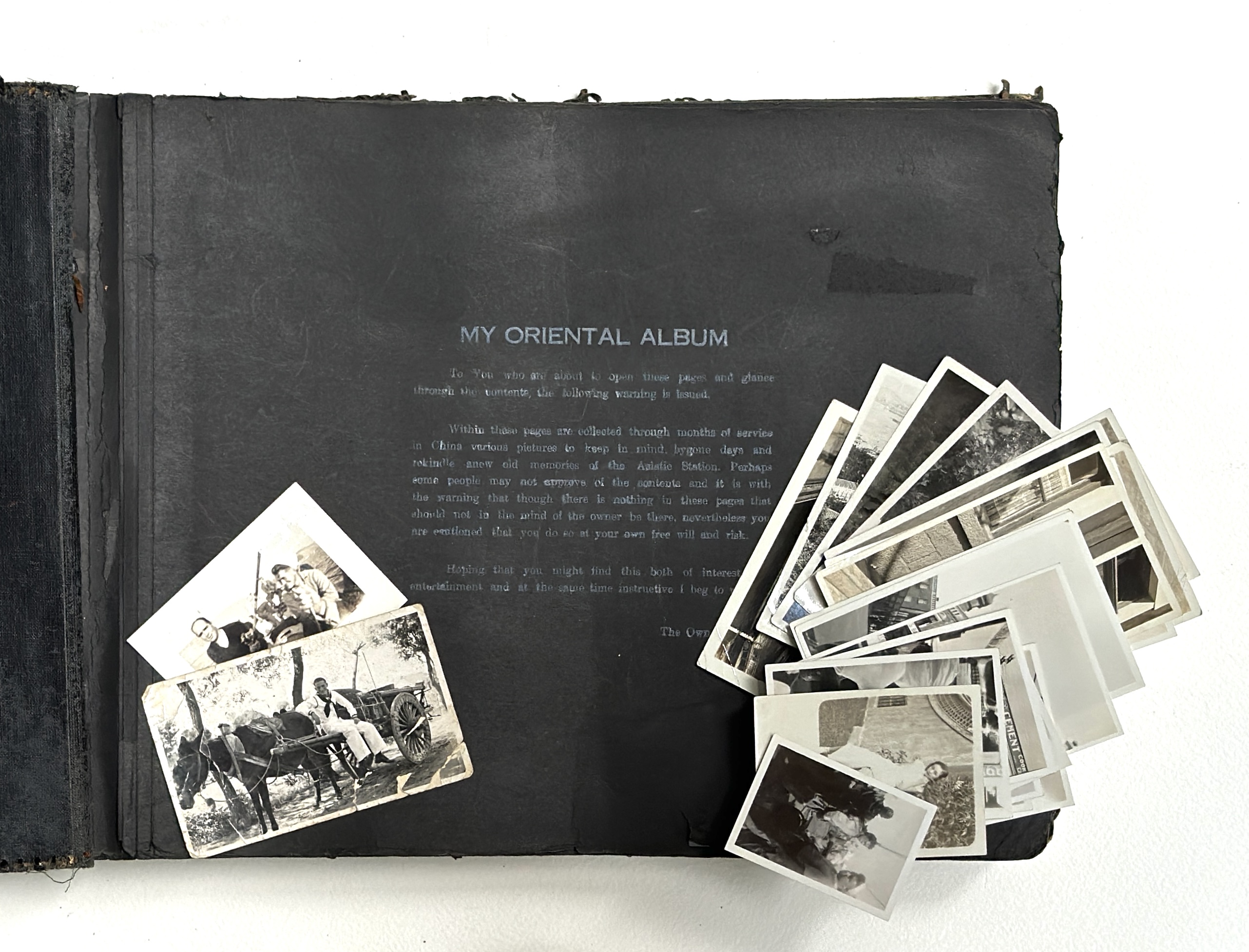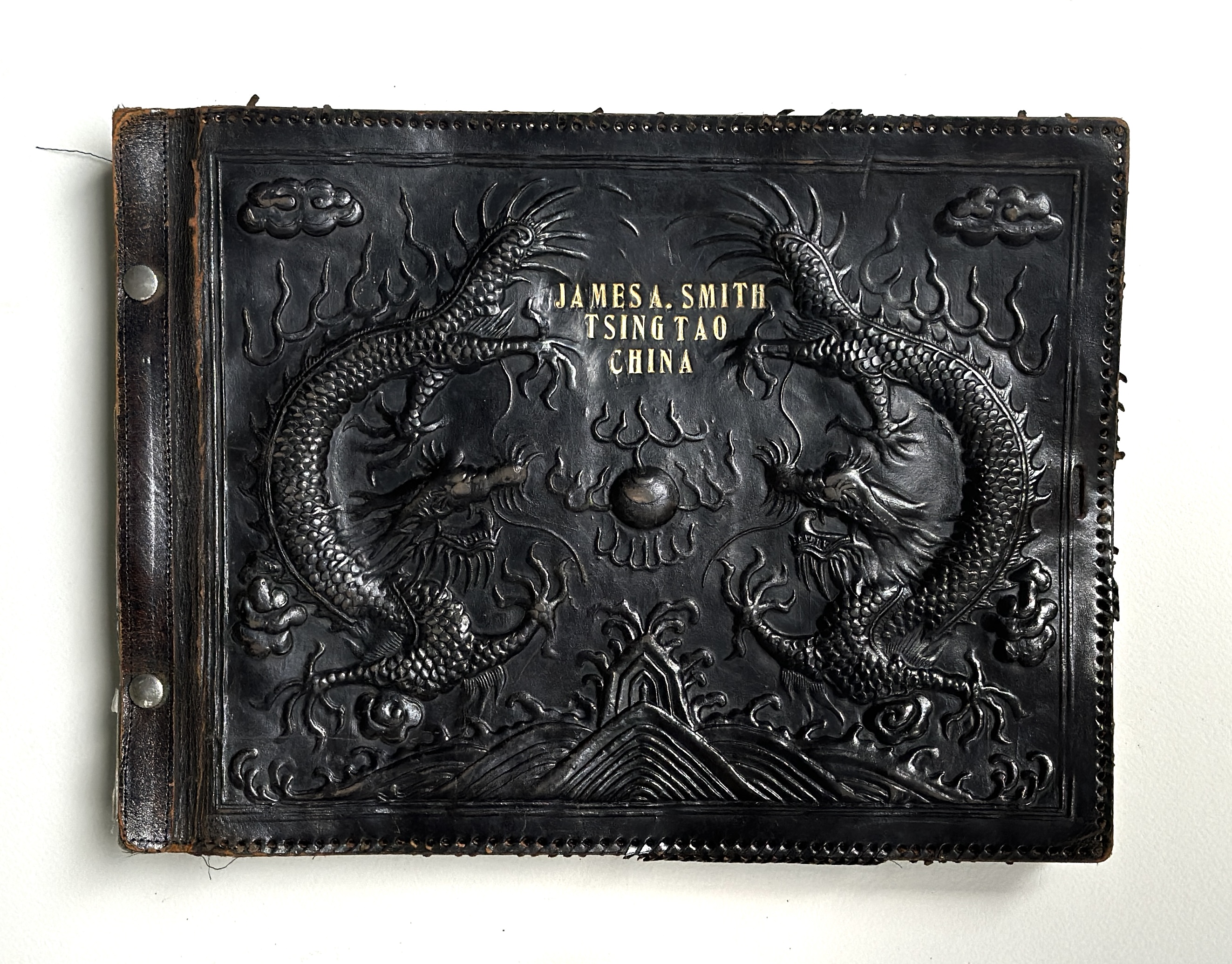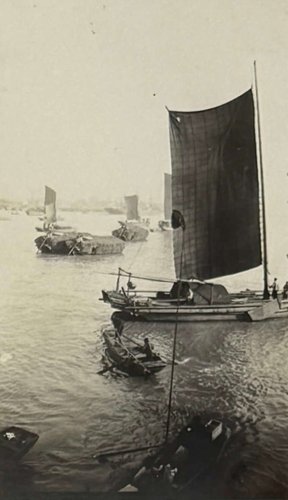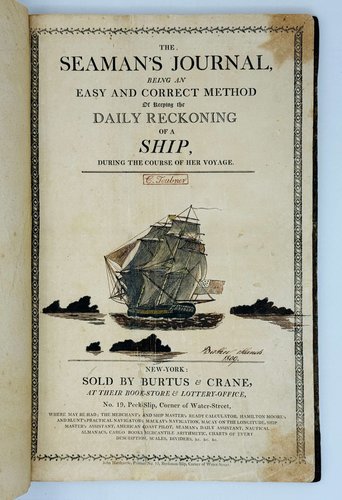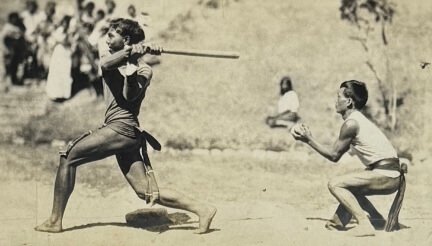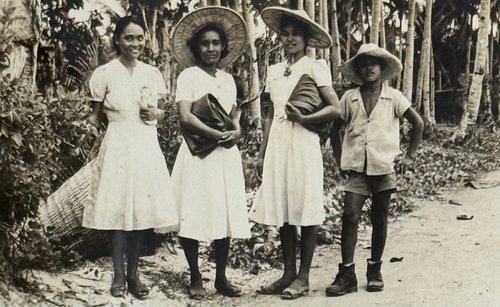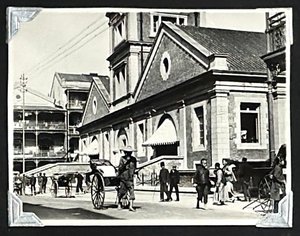
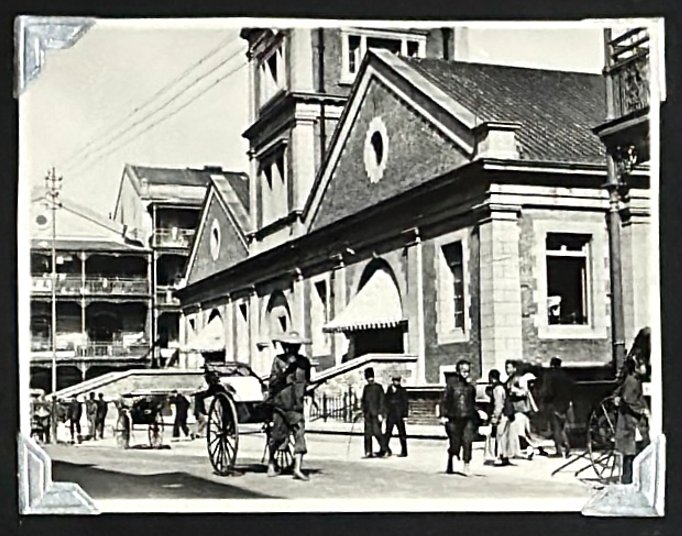

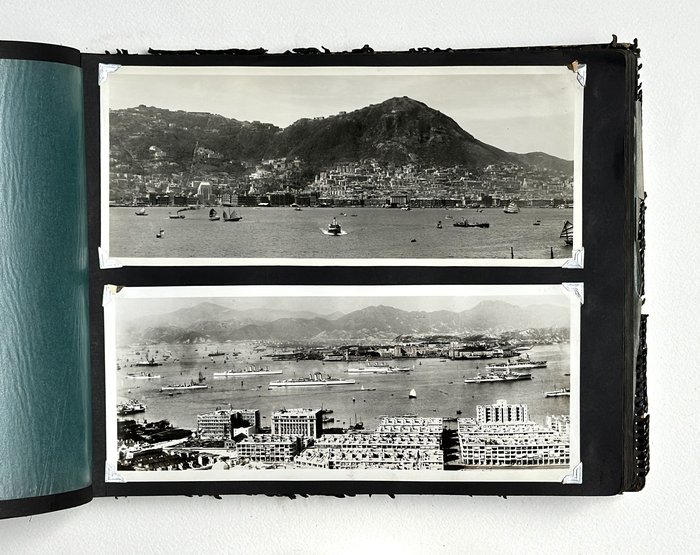
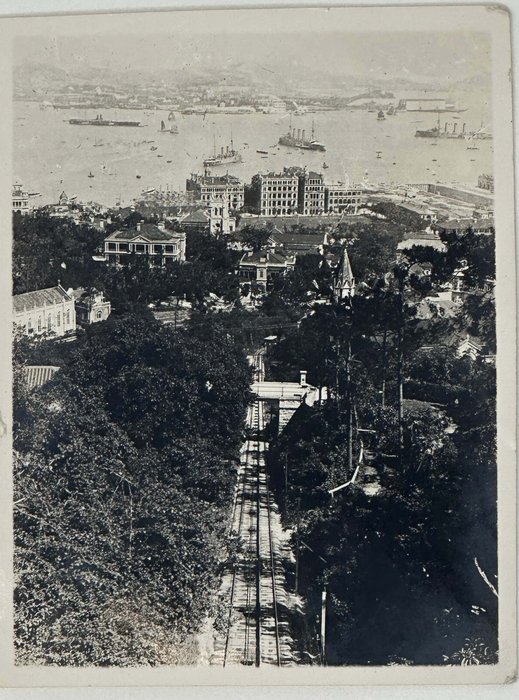

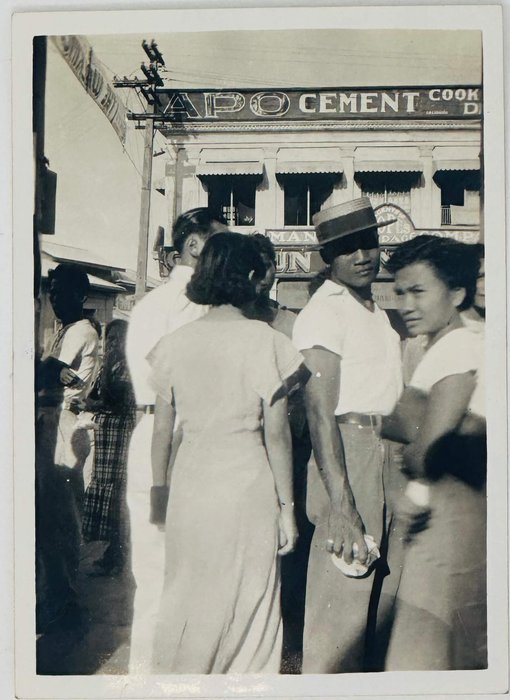
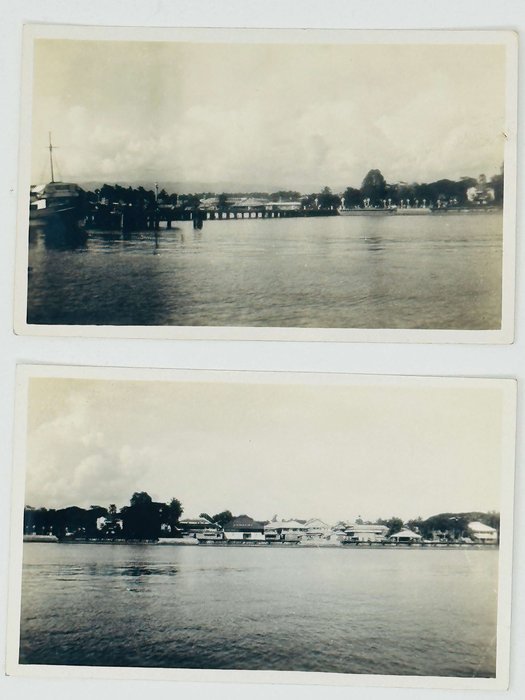
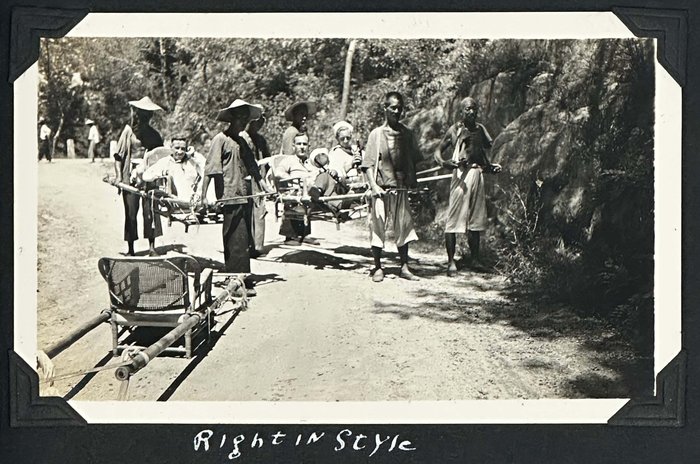

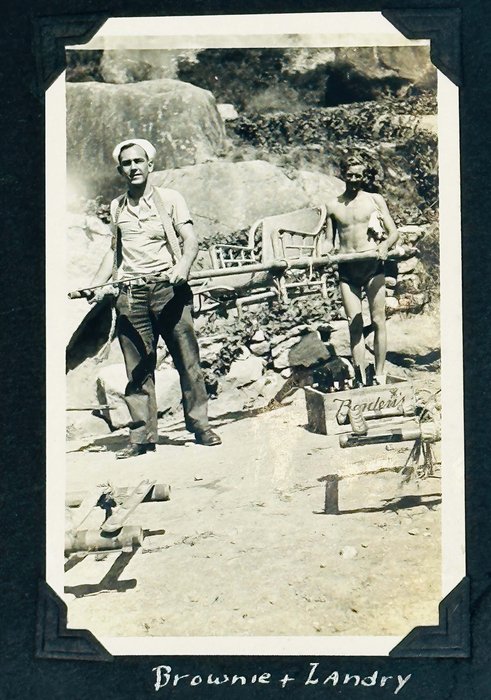
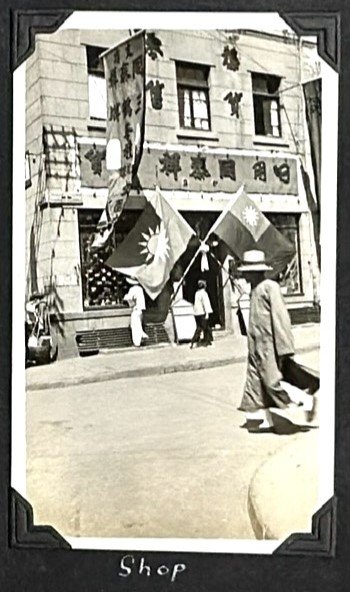


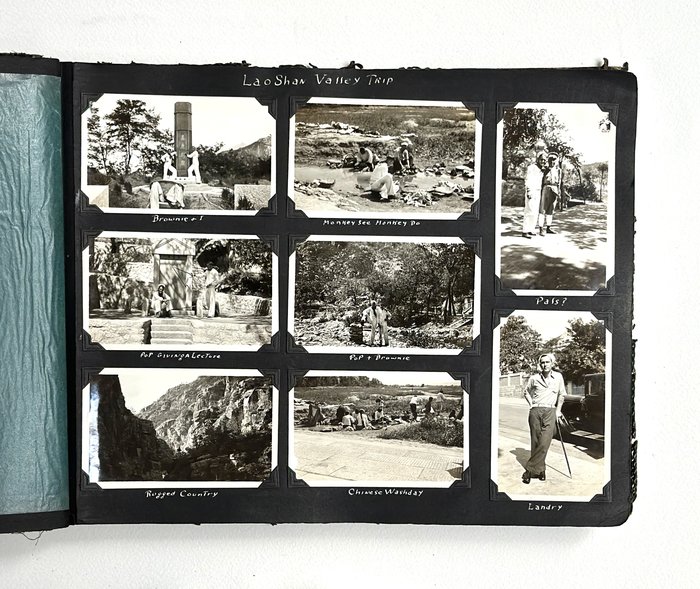
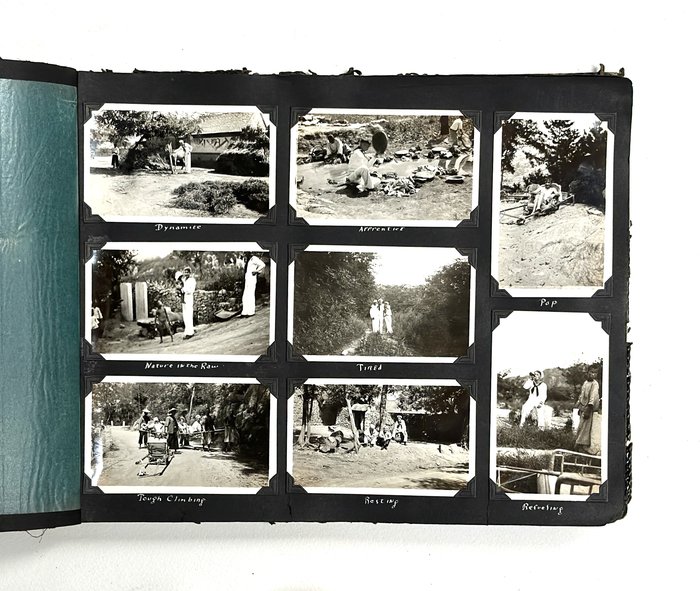
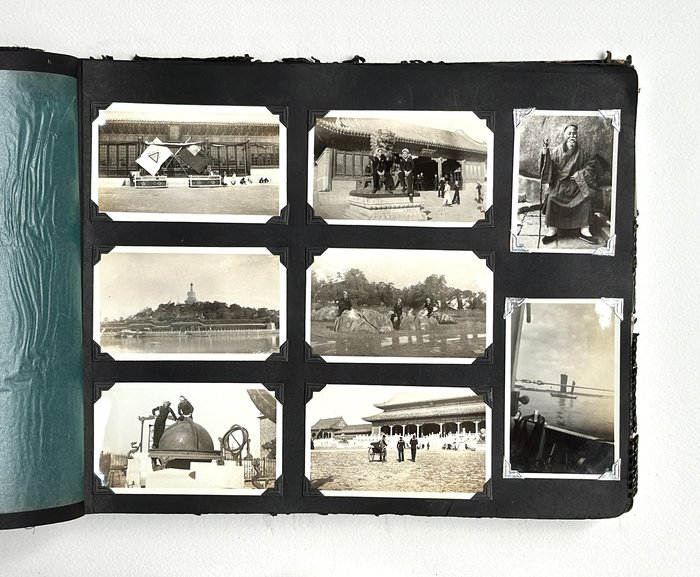

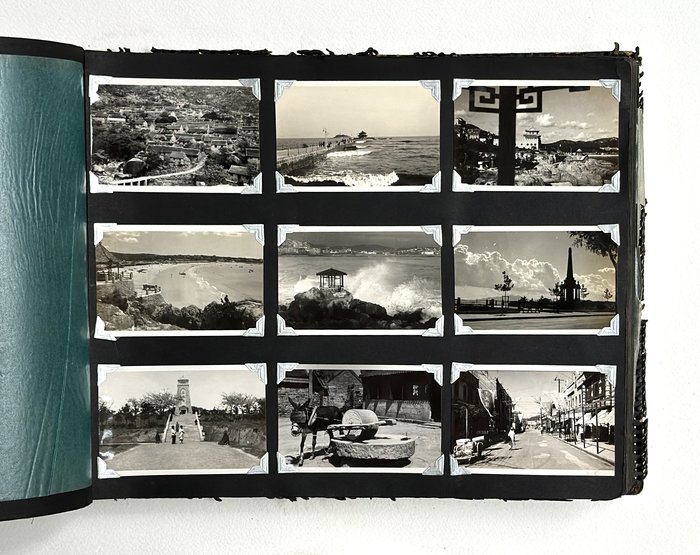
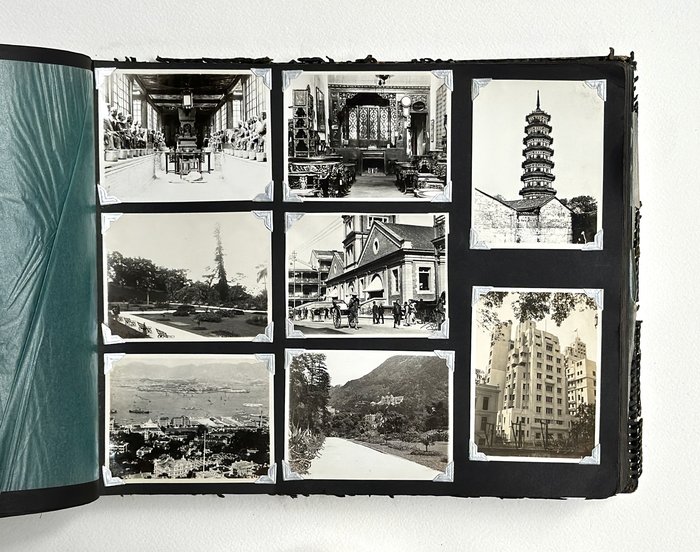
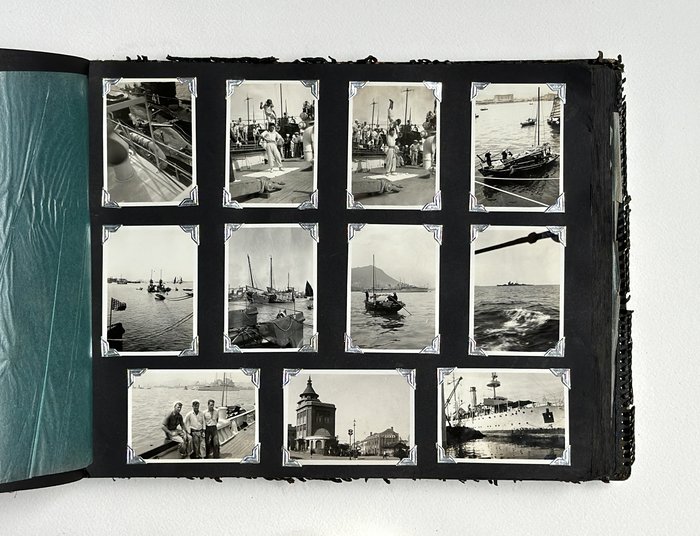

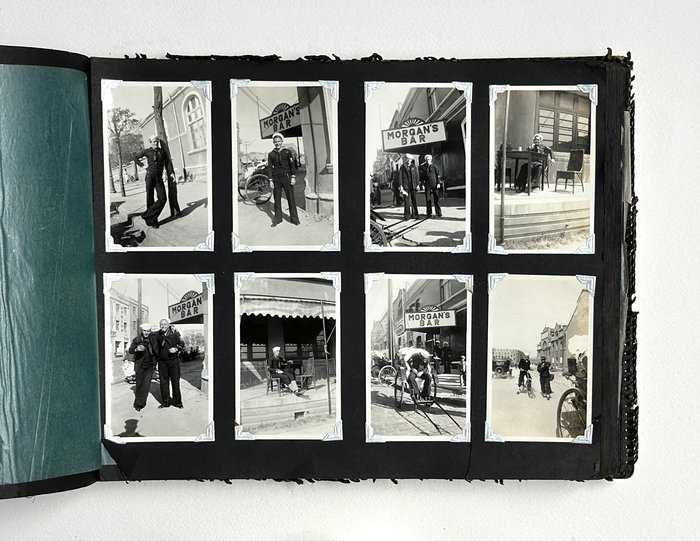
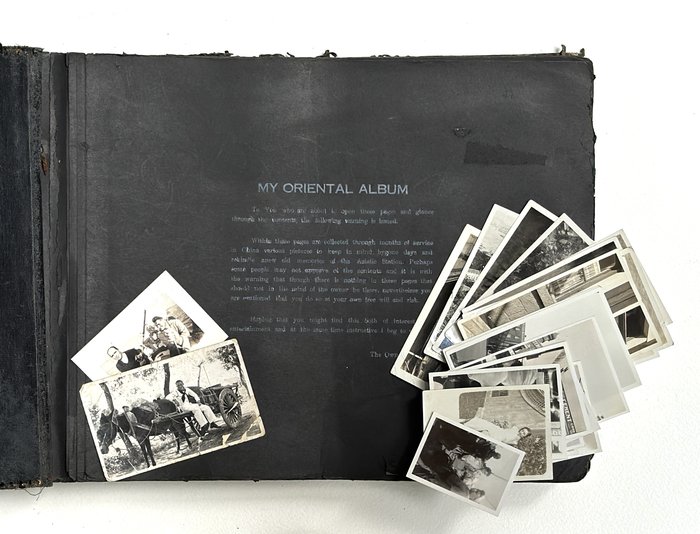
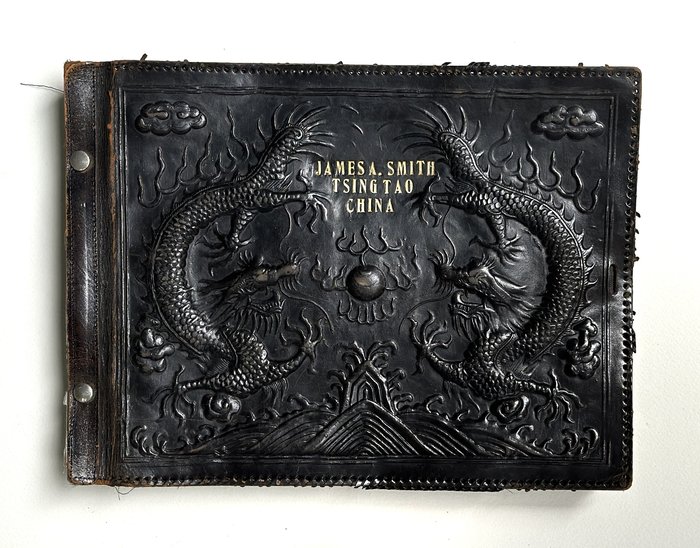
#PC42
Ca. 1930s
Oblong Folio album (ca. 27,5x36,5 cm). 75 card stock leaves with tissue guards (over 30 blank). With ca. 269 mounted gelatin silver photographs, including two large photos ca. 21x27 cm (8 ¼ x 10 ½ in) and ca. 20x25 cm (7 ¾ x 10 in), and two panoramas ca. 12x29 cm (4 ¾ x 11 ¼ in); the rest of the photos are from ca. 7x11 cm (2 ¾ x 4 ½ in) to ca. 6x8,5 cm (2 ¼ x 3 ¼ in). Ca. 70 photos with period white ink captions on the mounts, one photo is captioned in negative. With twenty-seven loosely inserted gelatin silver photos, including two large ones, ca. 20,5x25 cm (8x10 in) and 17x25 cm (6 ½ x 10 in); the rest of the photos are from ca 8x10,5 cm (3 ¼ x 4 in) to ca. 5,5x8 cm (2 ¼ x 3 ¼ in).
Period dark brown sheep boards, fastened with metal bolts; the front board with an elaborate blind-stamped ornament with two Chinese dragons and a gilt-lettered title. The first leaf with a period printed introduction, titled “My Oriental Album.” Boards rubbed on extremities, several leaves with minor tears on the margins not affecting the photos, four images previously removed from the album (but possibly laid in as loose photos), but overall a very good album of strong interesting photos.
Interesting album with over original gelatin silver snapshot photos of China and the Philippines, taken and collected by an American sailor during his service in the U.S. Naval Battle Force in the 1930s. The album opens with two large partly-coloured photos of the U.S. naval ships, where the compiler apparently served, a portrait of Admiral Harris Laning (1873-1941, commander of the U.S. Naval Battle Force in 1935-1936), and images of the ships of the Battle Force, “torpedo bomber” plane, “night battle practice,” and “ground swells.” Two large, loosely inserted photos show U.S.S. “Guadalupe” (launched in 1940), a fleet replenishment oiler where the compiler apparently served in the 1940s.
The photos of Tsingtao (Qingdao) include views of the entrance to the “Enlisted Men’s Club” and the interior of a dining room (apparently, in the same club), city racecourse, beach and waterfront, harbour with Chinese boats and U.S. naval ships, Zhanqiao pier with the octagonal Hunian pavilion, Memorial Monument to the fallen in the “Japanese War,” former German Governor’s House, city streets and shops (a shop with flags and sign “Sze Fang Road” on the side), pagodas and temples, portraits of a local policeman, Japanese girls, Chinese kids and families, people “making blankets,” beggars, U.S. sailors posing with young local women (“Nina & I,” “Shera & Spindle,” “Sally,” “Korean girls”), &c.
A series of over thirty images illustrate the “Lao Shan Valley Trip” (Mount Lao, southern Shandong Peninsula), showing the compiler and his fellow servicemen posing on the grounds of the local temples (possibly, the Temple of Supreme Purity), next to a “Chinese farmhouse,” playing with children, being carried in sedan chairs, drinking beer, &c.
The album also contains two large panoramas of Hong Kong (city waterfront and Victoria Peak taken from the sea; Victoria Harbour). Smaller photos of Hong Kong show the city waterfront with the third building of the Hong Kong and Shanghai Bank under construction (completed in 1935), harbour, mansions on the slopes of Victoria Peak, the Peak Tram, Chinese houseboats, Repulse Bay Hotel, a review of American marines, a ferry of the “Hongkong and Yaumati Ferry Ltd.” (sign “HYF” on the top), &c. There are also several views of Beijing (White Stupa on the Jade Flower Island, interior of the Forbidden City, sailors posing on the bronze astronomical instruments of the Ancient Observatory), the Great Wall of China, photos of “Pao Hsing Restaurant, All kinds of Liquors and Grocery, Regular Meals and Money Exchange, Chin Hang Tao, North China,” a new building of the “Chinese Telegraph Administration, Tangyi Road Branch,” Chinese pagodas, colourful street procession, numerous portraits of American sailors posing in rickshaw carts, at Chinese arch gates, riding donkeys, drinking at several bars (“Morgan’s Bar,” “U.S. Bar”), &c.
The photos of the Philippines show the facilities and vessels at the Olongapo Naval Station (modern-day U.S. Naval Base, Subic Bay): a floating drydock, the compiler’s ship missing the entrance to the dock, U.S.S. Pigeon, U.S.S. John D. Ford, U.S.S. Augusta, H.I. J.M.S. Koma, naval exercise in the Manila Bay, Corregidor Island, &c. Among the identified images of Manila are the views of the Central Post Office, Old Legislative Building, Legaspi Landing, scenes of public celebrations during the day and at night in the Luneta (Rizal) Park (with the visible Rizal Monument), &c. The other images show U.S. naval ships (at sea and in port), a submarine, lighthouses, group portraits of the compiler and other enlisted sailors, &c. Twenty-one photos at the rear portray the compiler and his family in the United States.

